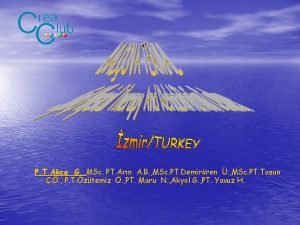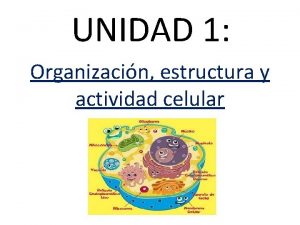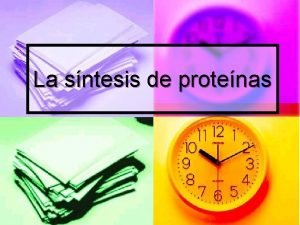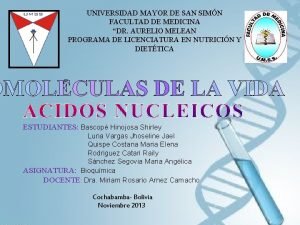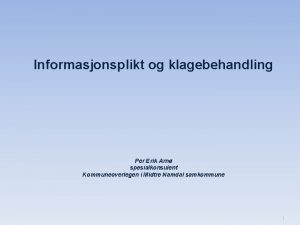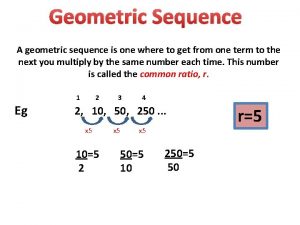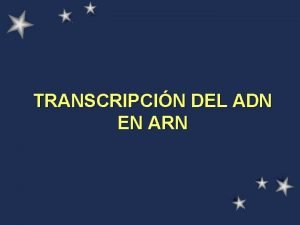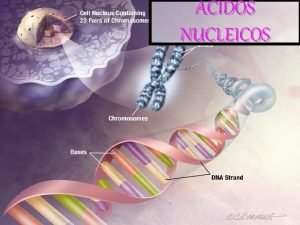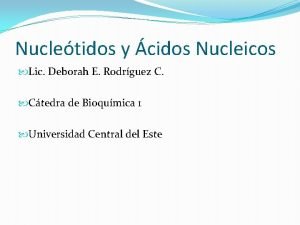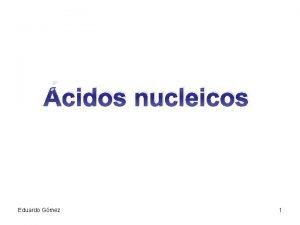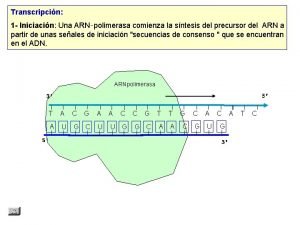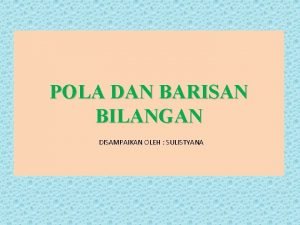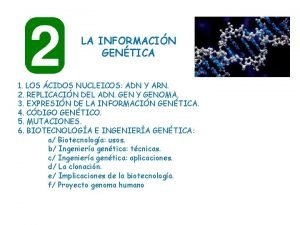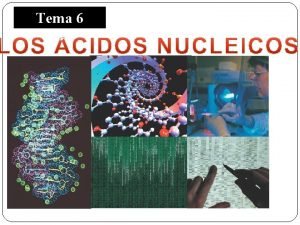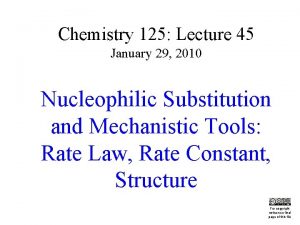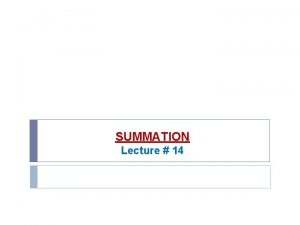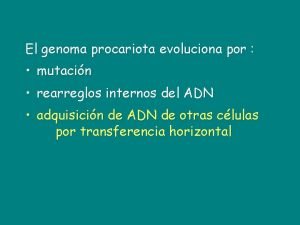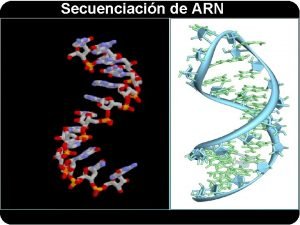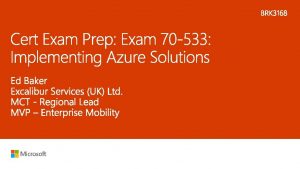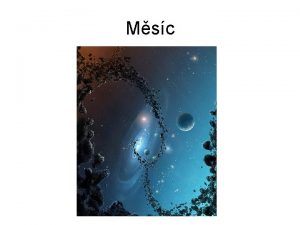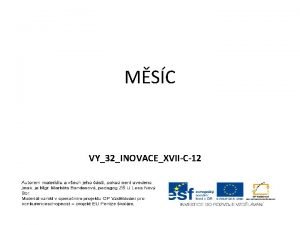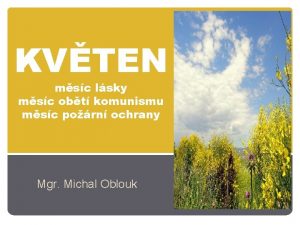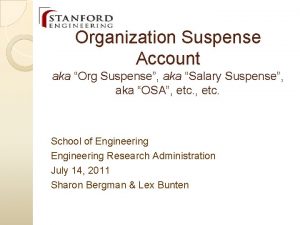P T Aka G MSc PT Arn A



















- Slides: 19

. P. T. Akça G. , MSc. PT. Arın A. B. , MSc. PT. Demirören Ü. , MSc. PT. Tosun Ç. Ö. , P. T. Özütemiz Ö. , PT. Maru N. , Akyol G. , PT. Yavuz H.

THE CORRELATION BETWEEN DISEASE DURATION AND SYMPTOMS, TRADITIONAL EVALUATION METHODS IN ANKYLOSING SPONDILITIS PATIENTS

Morning stiffness Chronic fatigue Back pain AS Spinal mobility Sleep disturbance ROM

To determine the relations between symptoms and traditional evaluation methods in ankylosing spondilitis (AS) patients who have disease duration less than ten years (group 1) and more than ten years (group 2).

● 254 AS patients in 2003 -2004 ● 10 y 125 patients (Group 1) ● 10 y 129 patients (Group 2) ● 20 sessions ( 2 passive, 3 active )

●Spinal mobility evaluation occiput-wall distance, schober test, cervical rotation, lumbar lateral flexion, intermalleolar distance and thorax expansion ●ROM evaluations goniometric measurements ●The number of shortness in muscles, morning stiffness, sleep disturbance, chronic fatigue, muscle strength, walking distance ● VAS

-Seconder diseases (Neurological , cardiopulmonary or orthopaedical diseases e. g. ) -Patients, who were unable to complete therapy course. -Patients, taking additional therapy modalities to the conventional program(3 active, 2 passive modalities)

● Group 1 (69 male, 56 female) 43. 09± 10. 06 ● Group 2 (85 male, 44 female) 58. 33± 17. 26 ● Groups are compared (pre-treatment) Group 1 trunk, upper and lower extremities’ muscles’ force (p<0. 05). Group 2 morning stiffness, sleep disturbance, chronic fatigue and pain (p<0. 05) Group 2 intermalleolar distance, schober, lumbar lateral flexion and thorax expansion (p<0. 05).

Parameters Group 1 Group 2 p Trunk muscle force mean±S. D. 3. 86± 1. 93 2. 76± 1. 36 0. 000 Upper limbs muscle force mean±S. D. 4. 12± 2. 07 3. 88± 2. 13 0. 000 Lower limbs muscle force mean±S. D. 4. 03± 1. 87 3. 08± 1. 76 0. 000 Table 1. The Comparison Measuruments Of Trunk, Upper And Lower Limbs Muscle Force In Two Groups (Pre-treatment)

Graphic 1. The Comparison Measuruments Of Intermalleolar Distance, Schober, Lumbar Lateral Flexion and Thorax Expansion In Two Groups (Pre-treatment)

Intermalleolar distance (ID) Lumbar lateral flexion (LLF) Thorax expansion (TE) Positive correlation (p<0. 05) Pain (P) Morning stiffness (MS) Chronic Fatigue (CF) Group 1 (Pre and post treatment)

Lumbar flexion (LF) Middle level negative correlation (p<0. 05) Pain (P) Morning stiffness (MS) Chronic fatigue (F) Group 1(Pre and post treatment)

Table 2. The Correlation Between Lumbar Flexion Measurument And The Measuruments of Pain, Morning Stiffness And Chronic Fatigue In Group 1 (Pre And Post Treatment) Pearson Pain Correla tion Morning Chronic Stiffne Fatigue ss Lumbal flexion Pre treatm ent r: -0. 443 p: 0. 000 p: -0. 531 p: 0. 000 r: -0. 397 p: 0. 023 Lumbal flexion Post treatm ent r: -0. 586 p: 0. 000 r: -0. 491 p: 0. 000 r: -0. 443 P: 0. 000

Shober test (ST) Middle correlation (p<0. 05) Finger to floor distance (FTFD) Lumbar side flexion (LSF) Intermalleolar distance (ID) Group 1(Pre and post treatment)

Group 1 Spinal mobility Trunk, upper and lower extremities muscle force (p<0. 05) Group 2 Disease related symptoms (p<0. 05)

Lumbar flexion (LF) Middle level negative correlation (p<0. 05) Pain (P) Morning stiffness (MF) Chronic fatigue (CF) Group 1 -2 (Pre and post treatment)

●Disease related symptoms Negative effect ●Spinal mobility ●Muscle force

Kapidzik et al. (2002) claimed that disease duration has an influence on functional ability, pain , radiographic progression of disease and the reduction of range of motion in ankylosing spondyliytis patients. Altin et al. (2001) suggested that affecting patients’ daily life and pulmonary involvement are common in early AS compared to late AS. Our study is claimed that spinal mobility, muscle force and symptoms deteriorate with disease duration in AS patients.

Thank you…
 Kapidzik
Kapidzik 3 tipos de arn
3 tipos de arn Arn n n n
Arn n n n Tres funciones de los ácidos nucleicos
Tres funciones de los ácidos nucleicos Per arn
Per arn Convergent geometric series
Convergent geometric series Arn
Arn Nnn arn
Nnn arn Arnm
Arnm Nucletidos
Nucletidos Desnaturalizacion del dna
Desnaturalizacion del dna Arn
Arn Un=-3n+7 jika un=-203 tentukan n
Un=-3n+7 jika un=-203 tentukan n Enlaces arn
Enlaces arn Replicacion del adn
Replicacion del adn Clonacion reproductiva
Clonacion reproductiva Composición química de los acidos nucleicos
Composición química de los acidos nucleicos Pet. arn
Pet. arn Summation notation example
Summation notation example Arn+
Arn+
